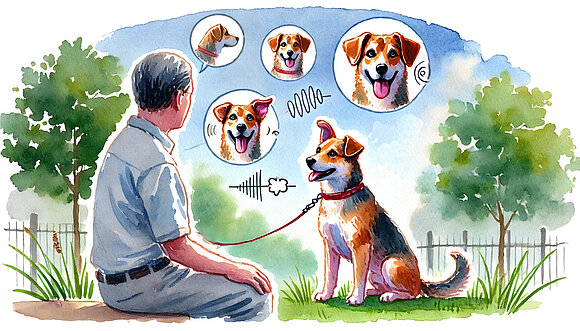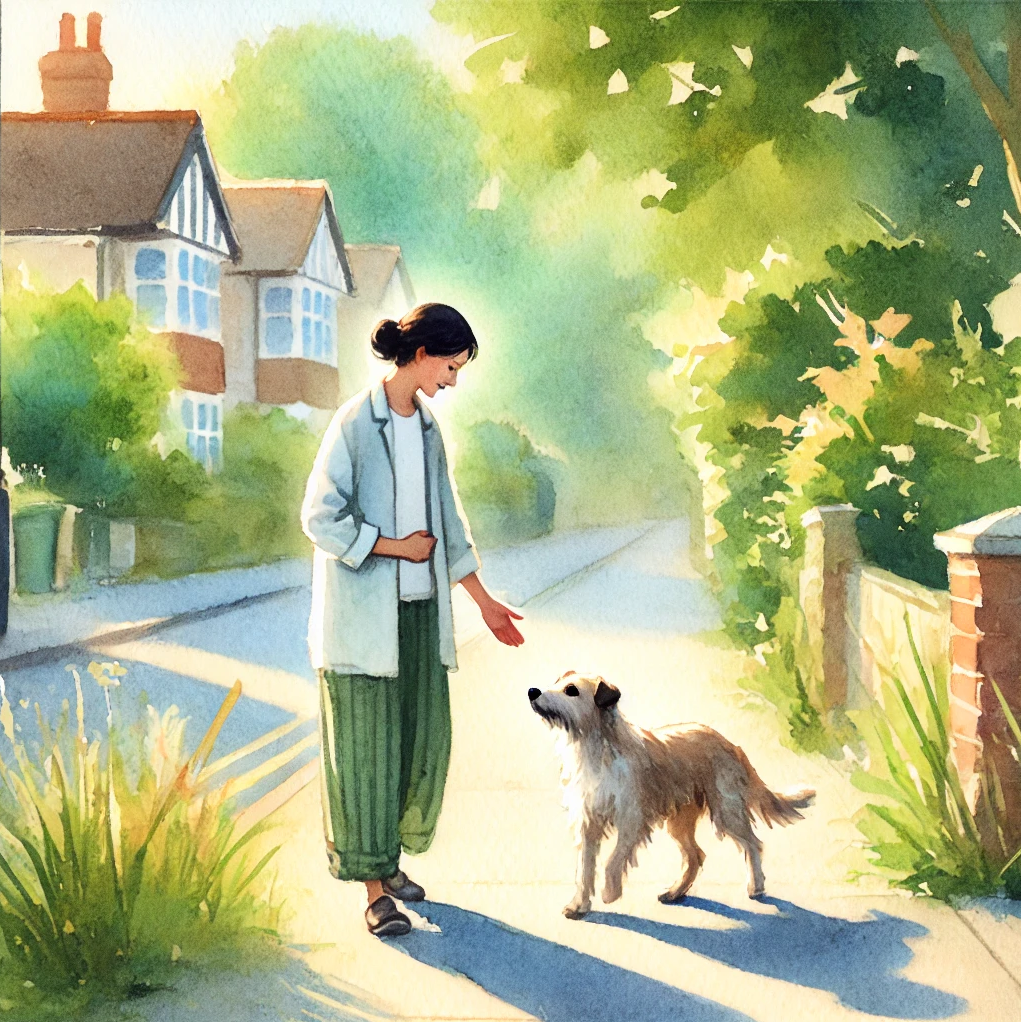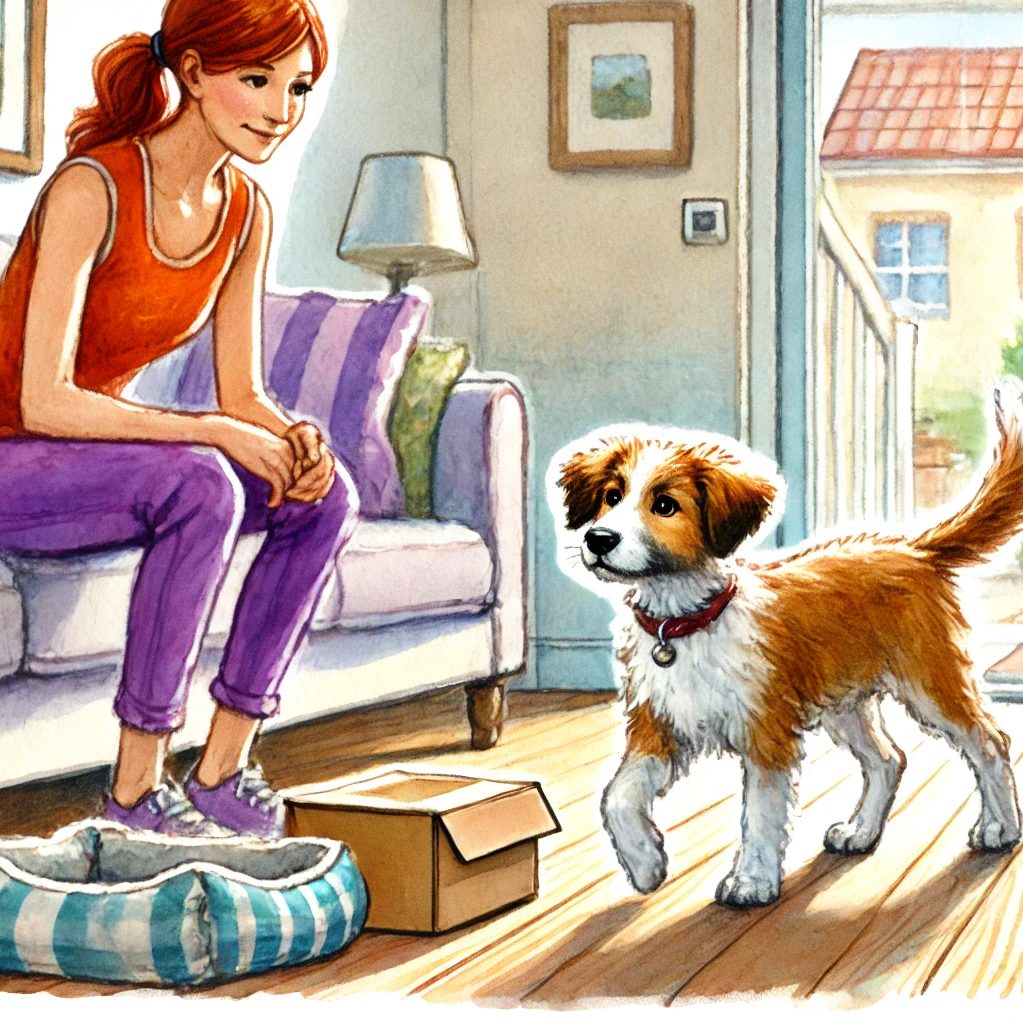Dog communication: What your dog's body language tells you

The basics of dog communication
The importance of body language
Dogs use a variety of body signals to express their feelings and intentions. These include body posture, ear position, direction of gaze, tail movements and more. Each of these signals can give you important clues about how your dog is feeling and what they may want to do next.
Body language in context
It's important to note that you should always consider your dog's body language in context. A single signal can have different meanings depending on the situation and the other signals your dog is showing at the same time. Therefore, always pay attention to the big picture to avoid misunderstandings.
Your dog's most important body signals
Tail position and movements
Your dog's tail is a valuable indicator of his mood. Here are some common tail positions and their meanings:
- Tail raised high: Your dog is confident and alert.
- Tail tucked between the legs: Your dog is scared or insecure.
- Tailwagging: Joy and excitement, but also uncertainty, depending on the intensity and speed of the cart.
- Tail held stiffly: Your dog is tense and possibly excited or anxious.
Ear position
The position of your dog's ears can also tell you a lot about his emotions:
- Erect ears: Your dog is alert and interested.
- Ears laid back: Your dog is feeling insecure or anxious.
- Ears pointing to the side: Your dog is relaxed or may be excited, depending on the situation.
Eyes and eye contact
Your dog's eyes are also an important communication channel:
- Direct eye contact: Self-confidence, but also a potential challenge or threat.
- Averted gaze: Your dog is trying to avoid conflict or is showing submission.
- Wide pupils: Excitement or fear.
Body posture
Your dog's posture can give you an indication of their well-being:
- Stiff posture: tension, anxiety or aggression.
- Loose, relaxed posture: Your dog feels comfortable and safe.
- Hunched posture: Your dog is showing submission or is afraid.
Mouth and teeth
The way your dog holds its mouth can also say a lot:
- Open mouth, relaxed tongue: your dog is relaxed and content.
- Lips pulled back, teeth showing: Your dog feels threatened and is ready to defend himself.
- Licking the lips: Uncertainty or appeasement.
Practical tips for reading body language
Observe your dog regularly
The more time you spend observing your dog, the better you will understand his body signals. Pay particular attention to changes in his body language in different situations.
Pay attention to the overall concept
Always try to interpret your dog's body language in the context of the current situation and the other signals he is showing. A single signal can have different meanings.
React appropriately
If you interpret your dog's body language correctly, you can react appropriately and help him to feel safe and understood. For example, if your dog shows signs of fear, try to remove the source of his fear or calm him down.
Final word
Understanding your dog's body language can help you build a deeper connection with them and better meet their needs. By paying attention to the signals he gives you, you can avoid misunderstandings and make sure your dog feels comfortable and safe. With a little practice, you'll soon be a real expert in dog communication!
More articles for you
What you should know about chocolate for dogs
Chocolate is a favorite treat for humans, but it can be dangerous for dogs. Why is this the case and what can you do if your dog has eaten chocolate? In this article you will learn more about the effects of chocolate on dogs and how you can help your four-legged friend.Read moreThe right way to deal with a stray dog
It's a sunny afternoon and you're out on your daily walk when suddenly a stray dog crosses your path. His fur is disheveled, he looks frightened and his eyes wander around looking for help. At times like this, you might ask yourself: “What should I do? How do I behave correctly?” This is not an…Read moreA new member of the family: How to prepare for a dog from the shelter
The decision to give a dog from a shelter a home is a wonderful and responsible choice. Shelter dogs are often loyal and grateful companions who are simply looking for a second chance at a loving home. But before you take this step, it is important that you prepare yourself well. In this article,…Read more


